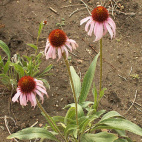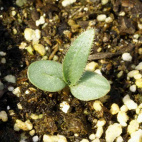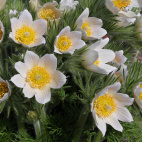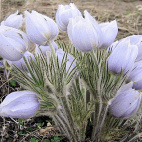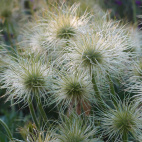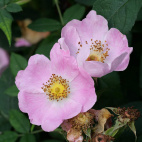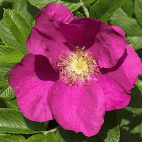Color
Availability
USDA Zone
Region
Type
Duration
Season
Germination
Soil
Sunlight
Height
Use
Narrow Your Search
Color
Availability
USDA Zone
Region
Type
Duration
Season
Germination
Soil
Sunlight
Height
Use
Wildflower Seeds - Northern Region
The Northern region is home to our Canadian friends in the eastern provinces, as well as the northern-most part of the Eastern US. This area is characterized by a long, cold winter with lots of snow, and a short humid summer that only lasts about 3 or 4 months. Most of the area is classified as a UDSA Growing Zone 4 or less, and the species that grow here have interesting ways to perpetuate themselves in spite of the short growing season. There are a lot of forests and wetlands in this region, so adequate moisture is hardly ever a problem. Look up your growing zone to make sure that the Northern wildflower seeds that you want to grow are winter hardy. Alternatively, just order annual flower seeds online so that the plant does not need to make it through the winter, but can reseed itself and come back from seed the next year.
-
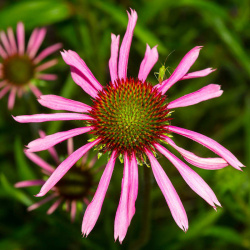 Narrow Leaf Purple Coneflower Seeds
Echinacea angustifolia
Try a new Echinacea variation featuring large, brown cones, purple petals, and slender leaves. This narrow leaf purple coneflower favorite is widely used in prairie plantings that have dry soil, and also possesses herbal properties.Quick View$3.48 Pkt - $21.00 / Oz
Narrow Leaf Purple Coneflower Seeds
Echinacea angustifolia
Try a new Echinacea variation featuring large, brown cones, purple petals, and slender leaves. This narrow leaf purple coneflower favorite is widely used in prairie plantings that have dry soil, and also possesses herbal properties.Quick View$3.48 Pkt - $21.00 / Oz -
 Pasque Flower Seeds
Anemone patens wolfgangiana
Pasque means Passion, and this native wildflower usually unfolds its lovely petals around the Easter season. Known as one of the first to blossom on the prairie, it is also called a Prairie Crocus. Once established, this plant can continue growing for up to fifty years. Once the delicate blooms have faded, it produces fluffy seedheads that float away with the wind.Quick Viewx
Pasque Flower Seeds
Anemone patens wolfgangiana
Pasque means Passion, and this native wildflower usually unfolds its lovely petals around the Easter season. Known as one of the first to blossom on the prairie, it is also called a Prairie Crocus. Once established, this plant can continue growing for up to fifty years. Once the delicate blooms have faded, it produces fluffy seedheads that float away with the wind.Quick ViewxPasque Flower Seeds
Anemone patens wolfgangiana
Pasque means Passion, and this native wildflower usually unfolds its lovely petals around the Easter season. Known as one of the first to blossom on the prairie, it is also called a Prairie Crocus. Once established, this plant can continue growing for up to fifty years. Once the delicate blooms have faded, it produces fluffy seedheads that float away with the wind.
$3.75 Pkt - $160.00 / Oz -
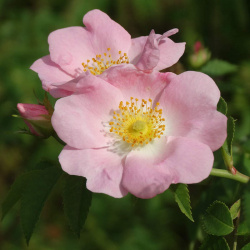 Pasture Rose Seeds
Rosa carolina
Beauty and charm are wrapped up together in these classic wild roses. This rose-pink perennial takes its time to reach maturity but is a carefree plant that flourishes a variety of conditions - even in clay soil. They also produce edible rose hips after blooming.Quick View$3.75 Pkt - $54.00 / Oz
Pasture Rose Seeds
Rosa carolina
Beauty and charm are wrapped up together in these classic wild roses. This rose-pink perennial takes its time to reach maturity but is a carefree plant that flourishes a variety of conditions - even in clay soil. They also produce edible rose hips after blooming.Quick View$3.75 Pkt - $54.00 / Oz -
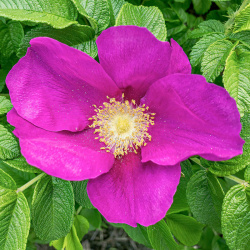 Prairie Wild Rose Seeds
Rosa arkansana
This wild beauty may not have as many petals as the garden rose varieties, but it does have a lovely fragrance. It does take a few years to grow from seed, and the vines do have some small thorns, but this perennial flourishes even in sandy, clay, or rocky soils.Quick Viewx
Prairie Wild Rose Seeds
Rosa arkansana
This wild beauty may not have as many petals as the garden rose varieties, but it does have a lovely fragrance. It does take a few years to grow from seed, and the vines do have some small thorns, but this perennial flourishes even in sandy, clay, or rocky soils.Quick ViewxPrairie Wild Rose Seeds
Rosa arkansana
This wild beauty may not have as many petals as the garden rose varieties, but it does have a lovely fragrance. It does take a few years to grow from seed, and the vines do have some small thorns, but this perennial flourishes even in sandy, clay, or rocky soils.
$3.48 Pkt - $24.00 / Oz
The Northern region is home to our Canadian friends in the eastern provinces, as well as the northern-most part of the Eastern US. This area is characterized by a long, cold winter with lots of snow, and a short humid summer that only lasts about 3 or 4 months. Most of the area is classified as a UDSA Growing Zone 4 or less, and the species that grow here have interesting ways to perpetuate themselves in spite of the short growing season. There are a lot of forests and wetlands in this region, so adequate moisture is hardly ever a problem. Look up your growing zone to make sure that the Northern wildflower seeds that you want to grow are winter hardy. Alternatively, just order annual flower seeds online so that the plant does not need to make it through the winter, but can reseed itself and come back from seed the next year.




